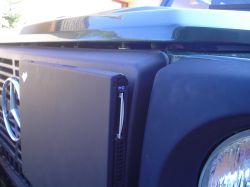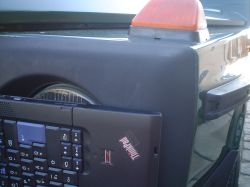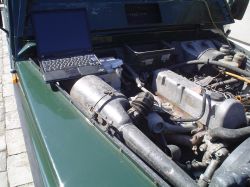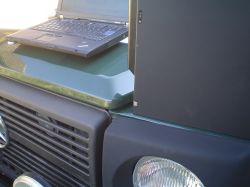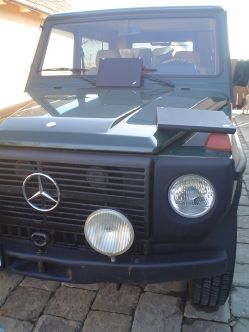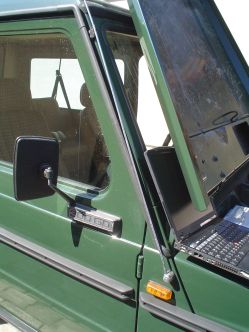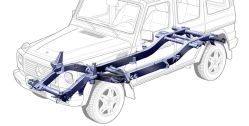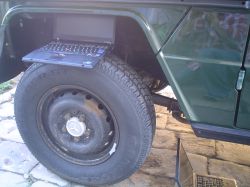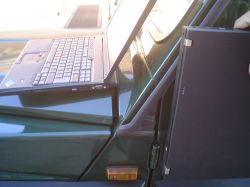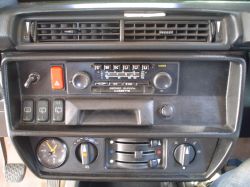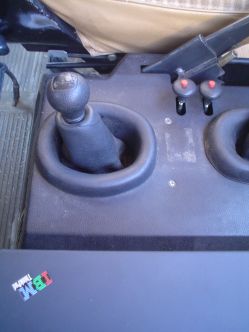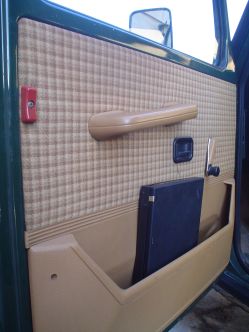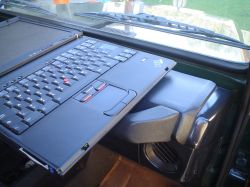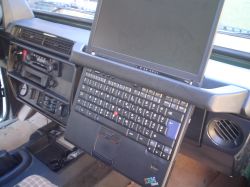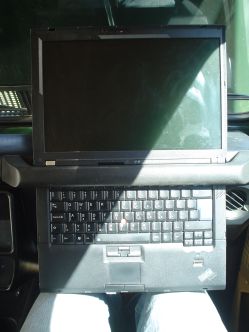



lapanet | blog | apogrif VII. - thing |
|
|
|
some things change, some don't. i decided to carry on in
english to have the infos published here in a more effective manner. the other day i saw the poll about the thinkpad laptops being cars.
the results made me think a lot of my non-swedish austrian car. nothing
new
afterall, i think of it all the time anyway. after all that thinking i
still don't know what car a thinkpad would be, but i'm quite sure what
it would like to be. let's start at the front. the W460 has the front corners
covered in rubber-like parts to avoid scratches by hostile trees,
bushes, nuclear power plants, etc. rumors say, the very first such parts were made of real
rubber, the 1983 version features a soft plastic material similar to
rubber. it has also a red (well, orange) dot there. we'll have more of this later. actually, the car features an
all-around protection made of real rubber. there is an upper line at
the level of the door handle starting right at the front (see above on
the right), and another
one protecting the lower edges of the chassis. yet another one pushes
the branches gently away at the top edge of the windshield, if
necessary. btw, on the picture above you
can also observe the air filter
of the OM617 engine, which afaik features an airflow design to keep
desert sand and dust spinned out before reaching the filter. this might
be a rumour, but in the box there are infact deflectors which make the
air spin around. you desperatedly need such a system, if
you're about to win the Dakar
in
1983 in that nasty storm. well, they didn't do it with a diesel,
of course, but with a 280GE. back then
there were 8 more g-s in the first 20. talking about diesels, let me
spend some words on the engine itself. the OM617.912 is maybe the most
durable passenger car motor ever built. it's a straight 5 cylinder,
3000ccm engine with mechanical injection and no turbocharger. it's 10
valves are steered by a steel chain, not by plastic belts or electrics. the chain is recommended to be
changed every 160.000 km. oil change takes place every 10.000 km.
that's basically all, having that and some other minor replacements
(glow plugs and injector tips) covered the engine has an overall
life span of 1.500.000 km's, with the cylinders and block renewed at
500.000 and 1.000.000 km-s. that's at least the factory
recommendation... ...which is not necessarily known to all greek
taxi
drivers. the 240D's OM616 is the little brother being the
very same but with 4 cylinders only. the 88 HP-s and the 172@2400 Nm-s are quite enough to climb anything patiently, on which the tyres find enough traction. and they usually do. the car has a top speed of 127 km/h, which is still reachable after 27 years of heavy duty. an important factor here is the wind direction, in a lucky case 150 km/h is achievable. for that one needs a very-very long highway to speed up. the engine needs only 10-12l / 100km fuel and
a lot of air to operate, so with a snorkel long enough it can run on
the bottom of
the
ocean
as well. in factory setup though the alternator's snorkel (see below
partially covered by the air filter tube) maximizes
crossing depth at 60 cm-s. having the doorstep and the inner floor
slightly above 45 cm-s there are some builtin flood vents to let the
water run out after using the wagen as a boot. such a
feature with drainage holes I think I
already saw somewhere. the motor is not quite picky in terms
of fuel, as it can run with used vegetable oil as well as with up to
20% added gasoline or kerozine in a very cold winter. it has a separate
oil cooler besides the water cooling system. The water cooler's
propeller is powered directly from the block's crankshaft and regulated
with
a bi-metal visco-kupplung. the hood weighs 33 kilogramms, and the first one from 1979 is still compatible with the newest one. tell me about docks, chargers and ultrabays. the complete truth is, that there were minor changes since then. these include hood isolation and inner steel plates on select models to make the hood walkable. some keep the spade also below the hood, or fitted onto it from the inside. yet, the most important
features of
the wagen rest below the chassis. a good starting point is the very
stiff base which avoids flexing in any direction. got rollcage?
and here we go with the next
important feature: the axles. these are kept in the right
position by only 3 metal rods each, giving unmatched articulation capabilities.
because of the wheels meeting serious and sudden twisting forces on
terrain, a large hydraulic work cylinder
ensures these forces cannot grab out the steering wheel of the driver's
hand and cause serious injury like a broken finger. one could say this
is an active protection system for hard driving (and not hard drives). the axles are largely oversized, and that by purpose: having a differential lock on both the rear and front wheels requires properly sized parts to handle the load. to give you an idea on the actual sizes i picked this photo showing the inner part housing of the first axle joint. assembled it looks similar to this, except here the plates at the bottom of the axle housing are custom made:
according to factory service manual the joint housing must (and so it can) be filled with 800g grease on each side, that after inserting the axle joint. really huge and accordingly heavy parts indeed. the cardans and the rest of the transmission are similarly sized. the same can be told of the hinges: inside we can find red dots here and there...
talking about the transfer: it's also a speciality of the car to make the 2 / 4 wheel drive and the reduced gear switchable on-the-fly. one must use the clutch to switch into reduced gear and back, of course. but that's not all. the W460 even had power take off as a rarely built-in option, which can be used to build a 88HP winch, to give an example. the PTO is also steered by the transfer case, see "N" on the lever for "Nebenantrieb".
...while others not. the
last picture shows an average adult sitting there, so plenty of space
is available. I really don't know how many of the Volvos have thinkpad docks as a factory option. |
|
|
